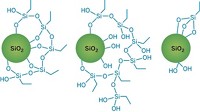Advertisement
Grab your lab coat. Let's get started
Welcome!
Welcome!
Create an account below to get 6 C&EN articles per month, receive newsletters and more - all free.
It seems this is your first time logging in online. Please enter the following information to continue.
As an ACS member you automatically get access to this site. All we need is few more details to create your reading experience.
Not you? Sign in with a different account.
Not you? Sign in with a different account.
ERROR 1
ERROR 1
ERROR 2
ERROR 2
ERROR 2
ERROR 2
ERROR 2
Password and Confirm password must match.
If you have an ACS member number, please enter it here so we can link this account to your membership. (optional)
ERROR 2
ACS values your privacy. By submitting your information, you are gaining access to C&EN and subscribing to our weekly newsletter. We use the information you provide to make your reading experience better, and we will never sell your data to third party members.
Materials
New Photoresist Does Old Acid Chemistry
Promising glass material works just like traditional lithography polymers
by Jyllian Kemsley
May 28, 2012
| A version of this story appeared in
Volume 90, Issue 22
The mechanism of acid production in a molecular glass photoresist for extreme ultraviolet lithography involves the formation of an aryloxy radical, just as in traditional polymer resist materials (J. Phys. Chem. B, DOI: 10.1021/jp300677q). Researchers want to understand how this type of photoresist works because they believe it could yield better lithographic resolution on semiconductor chips. It is made from a ladder-type cyclic oligomer called noria, with 50% of its hydroxyl groups substituted with 2-acetyloxy-2-methyladamantyl ester groups (noria-AD50). Both noria-AD50 and traditional resist materials, such as poly(4-hydroxystyrene) (PHS), are mixed with triphenylsulfonium triflate to capture ionized electrons from light exposure; the lithographic image is developed through acid-catalyzed deprotection reactions. In the new work, a group led by David M. Bartels at the Notre Dame Radiation Laboratory used electron paramagnetic resonance spectroscopy to find that acid production in noria-AD50 involves generation of an aryloxy radical, the same as for PHS. Surprisingly, the group found that noria-AD50 produces nearly the same amount of acid as PHS even though noria-AD50 has half the density of aryl alcohol groups. The researchers propose that proton transfers from the adamantyl groups prevent charge recombination and stabilize radical formation.





Join the conversation
Contact the reporter
Submit a Letter to the Editor for publication
Engage with us on Twitter